A brief overview of antitumoral actions of bruceine D
Cancer remains the second leading cause of mortality globally. In combating cancer, conventional chemotherapy and/or radiotherapy are administered as first-line therapy. However, these are usually a
[...] Read more.
Cancer remains the second leading cause of mortality globally. In combating cancer, conventional chemotherapy and/or radiotherapy are administered as first-line therapy. However, these are usually accompanied with adverse side effects that decrease the quality of patient’s lives. As such, natural bioactive compounds have gained an attraction in the scientific and medical community as evidence of their anticancer properties and attenuation of side effects mounted. In particular, quassinoids have been found to exhibit a plethora of inhibitory activities such as anti-proliferative effects on tumor development and metastasis. Recently, bruceine D, a quassinoid isolated from the shrub Brucea javanica (L.) Merr. (Simaroubaceae), has come under immense investigation on its antineoplastic properties in various human cancers including pancreas, breast, lung, blood, bone, and liver. In this review, we have highlighted the antineoplastic effects of bruceine D and its mode of actions in different tumor models.
Zi Wayne Sin ... Manoj Garg
Cancer remains the second leading cause of mortality globally. In combating cancer, conventional chemotherapy and/or radiotherapy are administered as first-line therapy. However, these are usually accompanied with adverse side effects that decrease the quality of patient’s lives. As such, natural bioactive compounds have gained an attraction in the scientific and medical community as evidence of their anticancer properties and attenuation of side effects mounted. In particular, quassinoids have been found to exhibit a plethora of inhibitory activities such as anti-proliferative effects on tumor development and metastasis. Recently, bruceine D, a quassinoid isolated from the shrub Brucea javanica (L.) Merr. (Simaroubaceae), has come under immense investigation on its antineoplastic properties in various human cancers including pancreas, breast, lung, blood, bone, and liver. In this review, we have highlighted the antineoplastic effects of bruceine D and its mode of actions in different tumor models.
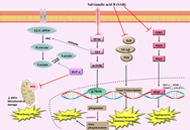 Possible applications of salvianolic acid B against different cancersOpen AccessReviewCancer is the second death causing disease worldwide after cardiovascular abnormalities. The difficulty in treating tumor cells with more precise targeted interventions and recurrence of cancer afte [...] Read more.Iram Shahzadi ... Reza MohammadinejadPublished: August 31, 2020 Explor Target Antitumor Ther. 2020;1:218–238
Possible applications of salvianolic acid B against different cancersOpen AccessReviewCancer is the second death causing disease worldwide after cardiovascular abnormalities. The difficulty in treating tumor cells with more precise targeted interventions and recurrence of cancer afte [...] Read more.Iram Shahzadi ... Reza MohammadinejadPublished: August 31, 2020 Explor Target Antitumor Ther. 2020;1:218–238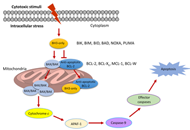 PROTACs are effective in addressing the platelet toxicity associated with BCL-XL inhibitorsOpen AccessReviewBCL-XL is an anti-apoptotic protein that plays an important role in tumorigenesis, metastasis, and intrinsic or therapy-induced cancer drug resistance. More recently, BCL-XL has also been identified [...] Read more.Peiyi Zhang ... Guangrong ZhengPublished: August 31, 2020 Explor Target Antitumor Ther. 2020;1:259–272
PROTACs are effective in addressing the platelet toxicity associated with BCL-XL inhibitorsOpen AccessReviewBCL-XL is an anti-apoptotic protein that plays an important role in tumorigenesis, metastasis, and intrinsic or therapy-induced cancer drug resistance. More recently, BCL-XL has also been identified [...] Read more.Peiyi Zhang ... Guangrong ZhengPublished: August 31, 2020 Explor Target Antitumor Ther. 2020;1:259–272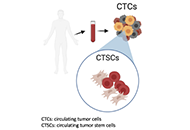 Circulating cancer stem cells: an interesting niche to exploreOpen AccessCommentaryFederica PapaccioPublished: August 31, 2020 Explor Target Antitumor Ther. 2020;1:253–258
Circulating cancer stem cells: an interesting niche to exploreOpen AccessCommentaryFederica PapaccioPublished: August 31, 2020 Explor Target Antitumor Ther. 2020;1:253–258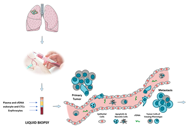 Future directions and management of liquid biopsy in non-small cell lung cancerOpen AccessReviewLung cancer represents the world’s most common cause of cancer death. In recent years, we moved from a generic therapeutic strategy to a personalized approach, based on the molecular char [...] Read more.Alessia Maria Cossu ... Marco BocchettiPublished: August 31, 2020 Explor Target Antitumor Ther. 2020;1:239–252
Future directions and management of liquid biopsy in non-small cell lung cancerOpen AccessReviewLung cancer represents the world’s most common cause of cancer death. In recent years, we moved from a generic therapeutic strategy to a personalized approach, based on the molecular char [...] Read more.Alessia Maria Cossu ... Marco BocchettiPublished: August 31, 2020 Explor Target Antitumor Ther. 2020;1:239–252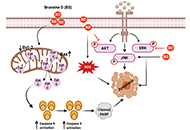 A brief overview of antitumoral actions of bruceine DOpen AccessReviewCancer remains the second leading cause of mortality globally. In combating cancer, conventional chemotherapy and/or radiotherapy are administered as first-line therapy. However, these are usually a [...] Read more.Zi Wayne Sin ... Manoj GargPublished: August 31, 2020 Explor Target Antitumor Ther. 2020;1:200–217
A brief overview of antitumoral actions of bruceine DOpen AccessReviewCancer remains the second leading cause of mortality globally. In combating cancer, conventional chemotherapy and/or radiotherapy are administered as first-line therapy. However, these are usually a [...] Read more.Zi Wayne Sin ... Manoj GargPublished: August 31, 2020 Explor Target Antitumor Ther. 2020;1:200–217